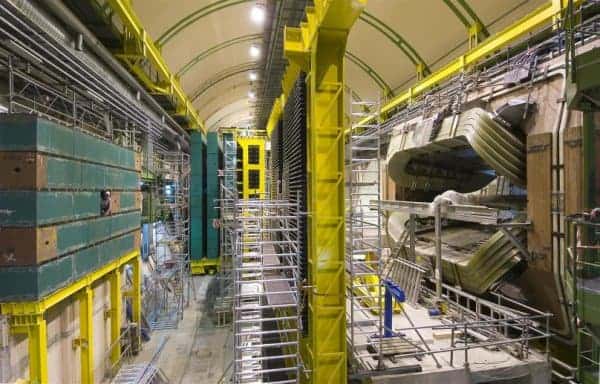
Any remaining hopes that the UK government might plug an £80m hole in the nation’s physics-research budget were dashed yesterday. In a 27-page response to a parliamentary select committee inquiry that had criticized the way the government and the Science and Technology Facilities Council (STFC) handled the 2008–2011 science budget allocations, the government’s Department of Innovation, Universities and Skills (DIUS) says it is “simply wrong” to suggest that the STFC budget was cut by the government in the first place.
Instead, the government has reiterated its claim that the STFC’s budget will increase by £185m (about 13.6%) over the three-year period, adding that the £80m figure was derived from “STFC aspirations” drawn up before receiving its budget. “There are no plans to move money around,” a DIUS spokesperson told physicsworld.com.
It is a nonsense to say that the way the STFC announced we were pulling out of the ILC has not damaged our international standing Brian Foster, Oxford University
Funding fiasco
In April this year a 14-strong panel of MPs on the Innovation Universities, Science and Skills Select Committee came down heavily on the government and the STFC for their roles in the funding fiasco, which emerged late last year. In addition to prompting the STFC to announce it was pulling out of the International Linear Collider (ILC), the Gemini telescope and all ground-based solar terrestrial physics projects, research grants are expected to be slashed by up to 25% over the next three years as a direct result of the shortfall. This could cost tens if not hundreds of jobs and threaten observatories and experiments such as those at the Large Hadron Collider (LHC) at CERN.
The MP’s report apportioned some of the blame to the way STFC was created in April 2007 by merging the Particle Physics and Astronomy Research Council (which awarded research grants) with the CCLRC (which managed scientific facilities). It claimed DIUS should have known that STFC would inherit the future operating costs of the ISIS neutron source and the brand new Diamond synchrotron at the Rutherford Appleton Lab in Oxfordshire, which amounted to £25m per year, and therefore should honour its original commitment to leave “no legacy funding issues” from the merger. But in its formal response to the select committee report, DIUS states that the STFC did not inherit a deficit from CCLRC and considers that the government “fully meets the commitment given at the time of STFC’s creation”.
International reputation
The government also believes that the UK remains a reliable international partner despite the committee’s findings that pulling out of the ILC and Gemini had made it look “unreliable” and “incompetent”. But European leader of the ILC project Brian Foster of Oxford University says the response is a non sequitur. “Like much of its response to the Select Committee, the government view regarding the ILC is actually very measured,” he told physicsworld.com. “But it is a nonsense to say that the way the STFC announced we were pulling out of the ILC has not damaged our international standing.”
On the particle physics side, it looks like the consultation panel did an excellent job Tim Gershon, University of Warwick
The report acknowledges that communication between STFC and its community and between government and the STFC could be improved, and says the government is working closely with STFC on the lessons learnt from the allocations process. Although it says that changes to the leadership of the STFC (which received damning criticism in the committee report) would only be “disruptive”, the council has agreed to ministers’ request to conduct an independent organisational review to assess its effectiveness. This is due to report in September, along with another government-appointed review of UK physics in general chaired by Bill Wakeham of Southampton University.
In the mean time, the STFC has completed a major consultation with the scientific community to help determine which projects should take priority in the face of inevitable cuts. The original “programmatic review” announced in February caused uproar, with the ranking procedure (which was carried out largely behind closed doors by two panels of around 10 researchers: PPAN for particle physics, nuclear physics and astronomy; and PALS for all other STFC programs) leaving many physicists baffled.
In particular, the LHCb experiment — one of four giant detectors around the LHC ring about to start taking data and which has a large UK contingent — found itself in the “medium–low” category, while another LHC experiment, ALICE, and the e-Merlin radio–telescope were classed in the “lower” category. The latter led to widespread concern about the future of the Jodrell Bank observatory.
Specialist panels
Some 1400 letters and emails sent in response to the review have now been digested by 10 specialist panels, and last week the STFC posted PPAN’s and PALS’s revised rankings on its website. The effort mostly seems to have paid off.
For each of the projects in the review, PPAN worked out an “alpha grade” where alpha 5 is the highest and alpha 1 means the project is unlikely to be funded. Overall the rankings have not changed that much, but significantly LHCb has been bumped up to alpha 4, ALICE to alpha 3, and e-Merlin notched up slightly to alpha 2. The MINOS neutrino experiment at Fermilab in the US has also been boosted to alpha 2, and the panel recommended that R&D for ILC detectors should be ramped down slowly in order to maximize their scientific value. The STFC executive expects to take a final decision at a meeting on July 1.
Overall there is still a lot of uncertainty about how much money physics departments are going to lose from existing grants Mike Green, Royal Holloway, University of London
“On the particle physics side, it looks like the consultation panel did an excellent job,” says Tim Gershon of the University of Warwick. “The only problems remain in areas where PPAN has decided not to accept its recommendations, such as the decision not to fund the BaBar experiment and to cut LHCb at 10% rather than the recommended 5%. This is hard to understand given that the consultation panel had worked through the costings [e.g. by shaving costs off other projects].”
Mike Green of Royal Holloway, University of London, who was on the particle physics panel, says that even though a 10% cut on LHCb is better than the original 25%, it still means that the UK may have to hand over some of its crucial detector responsibilities to another country.
“Overall there is still a lot of uncertainty about how much money physics departments are going to lose from existing grants, which is making it very difficult to plan ahead,” says Green, who is also a member of the Particle Physics Action Group set up in response to the funding crisis. “While we welcome the government’s and STFC’s commitment to improve communications and engagement, let us not forget that the government continues to insist that STFC received a 13.6% increase in its budget when this fails to recognize that a substantial fraction of this increase represents past investment. The future ‘near-cash’ increase in the STFC budget is 8%, which is lowest of all the research councils and will mostly be swallowed up to provide for full economic costing.”



